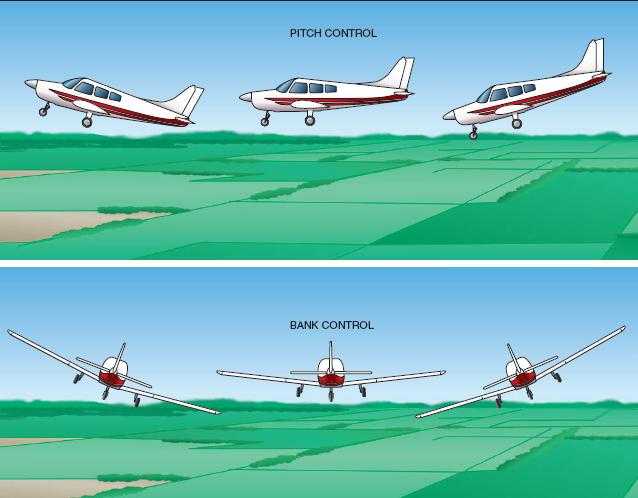Aircraft piloting/Attitude flying
< Aircraft pilotingATTITUDE FLYING
In contact (VFR) flying, flying by attitude means visually establishing the airplane’s attitude with reference to the natural horizon. [Figure 3-1] Attitude is the angular difference measured between an airplane’s axis and the line of the Earth’s horizon. Pitch attitude is the angle formed by the longitudinal axis, and bank attitude is the angle formed by the lateral axis.

Rotation about the airplane’s vertical axis (yaw) is termed an attitude relative to the airplane’s flightpath, but not relative to the natural horizon.
In attitude flying, airplane control is composed of four components: pitch control, bank control, power control, and trim.
- Pitch control is the control of the airplane about the lateral axis by using the elevator to raise and lower the nose in relation to the natural horizon.
- Bank control is control of the airplane about the longitudinal axis by use of the ailerons to attain a desired bank angle in relation to the natural horizon.
- Power control is used when the flight situation indicates a need for a change in thrust.
- Trim is used to relieve all possible control pressures held after a desired attitude has been attained.
The primary rule of attitude flying is:
ATTITUDE + POWER = PERFORMANCE
This article incorporates text from the public domain edition of Airplane Flying Handbook by the US Federal Aviation Administration.